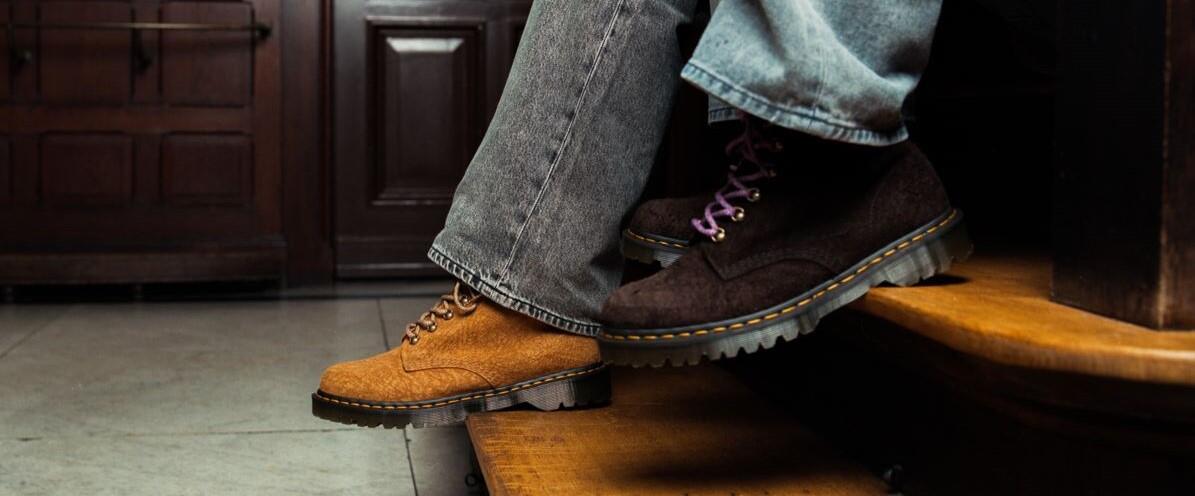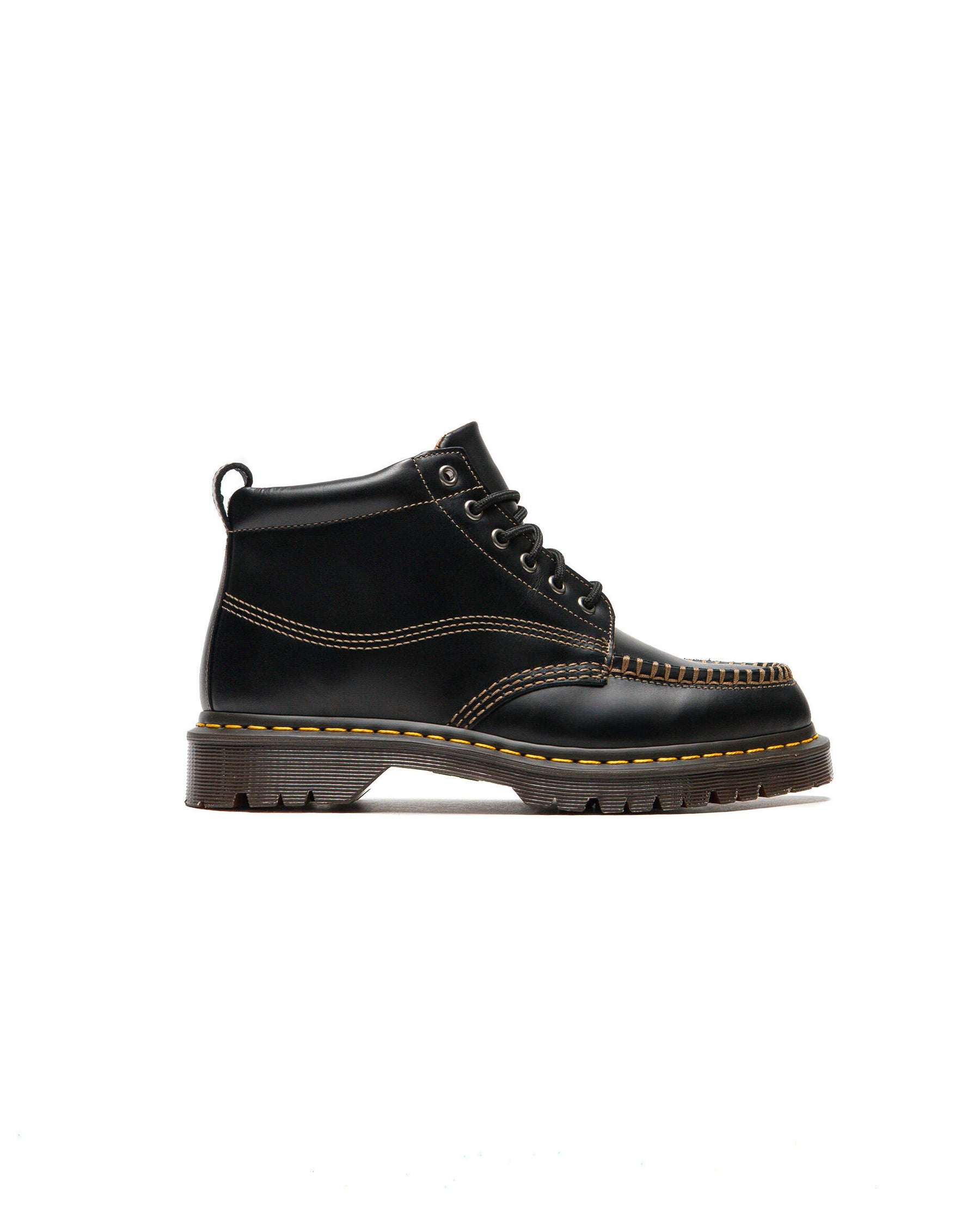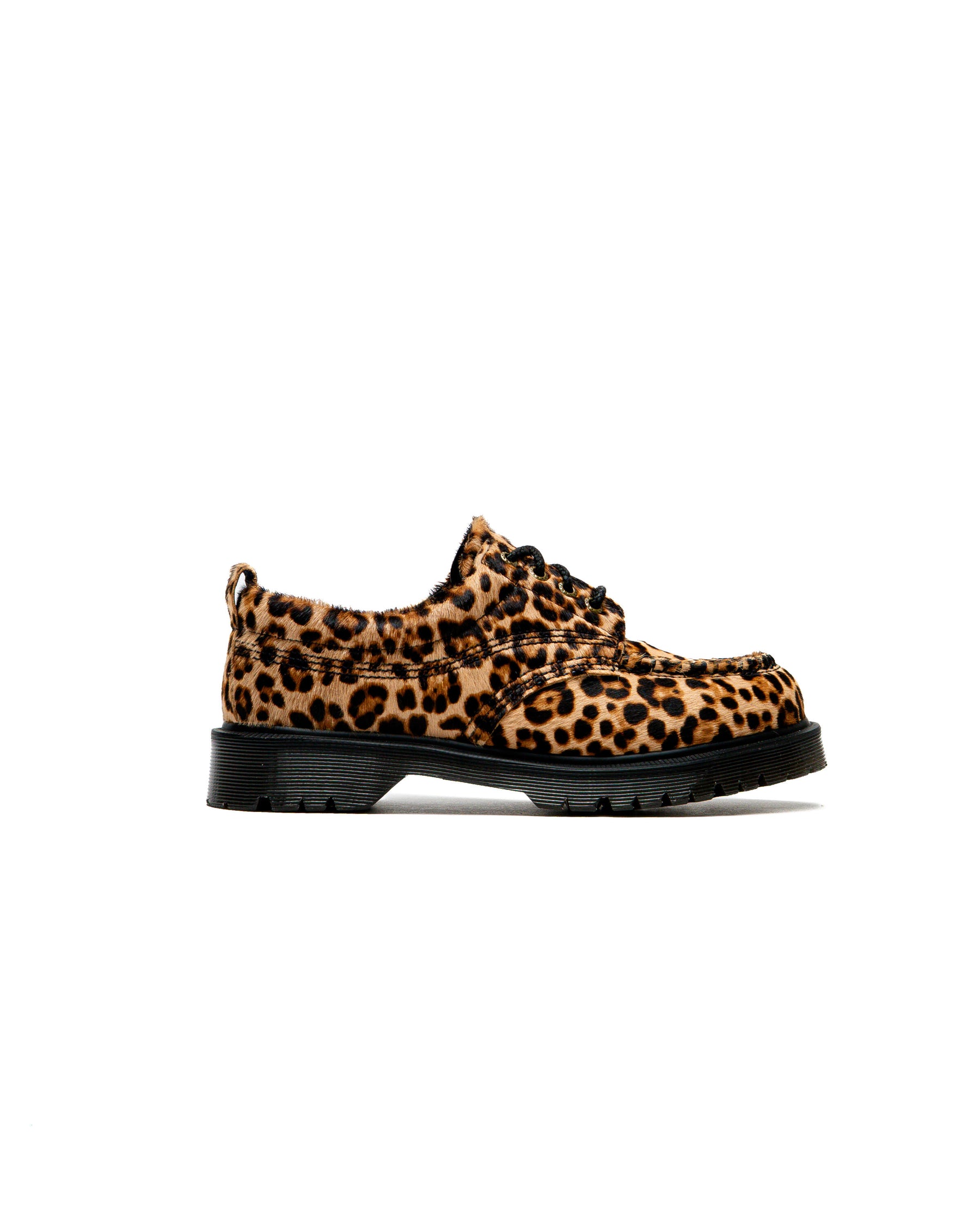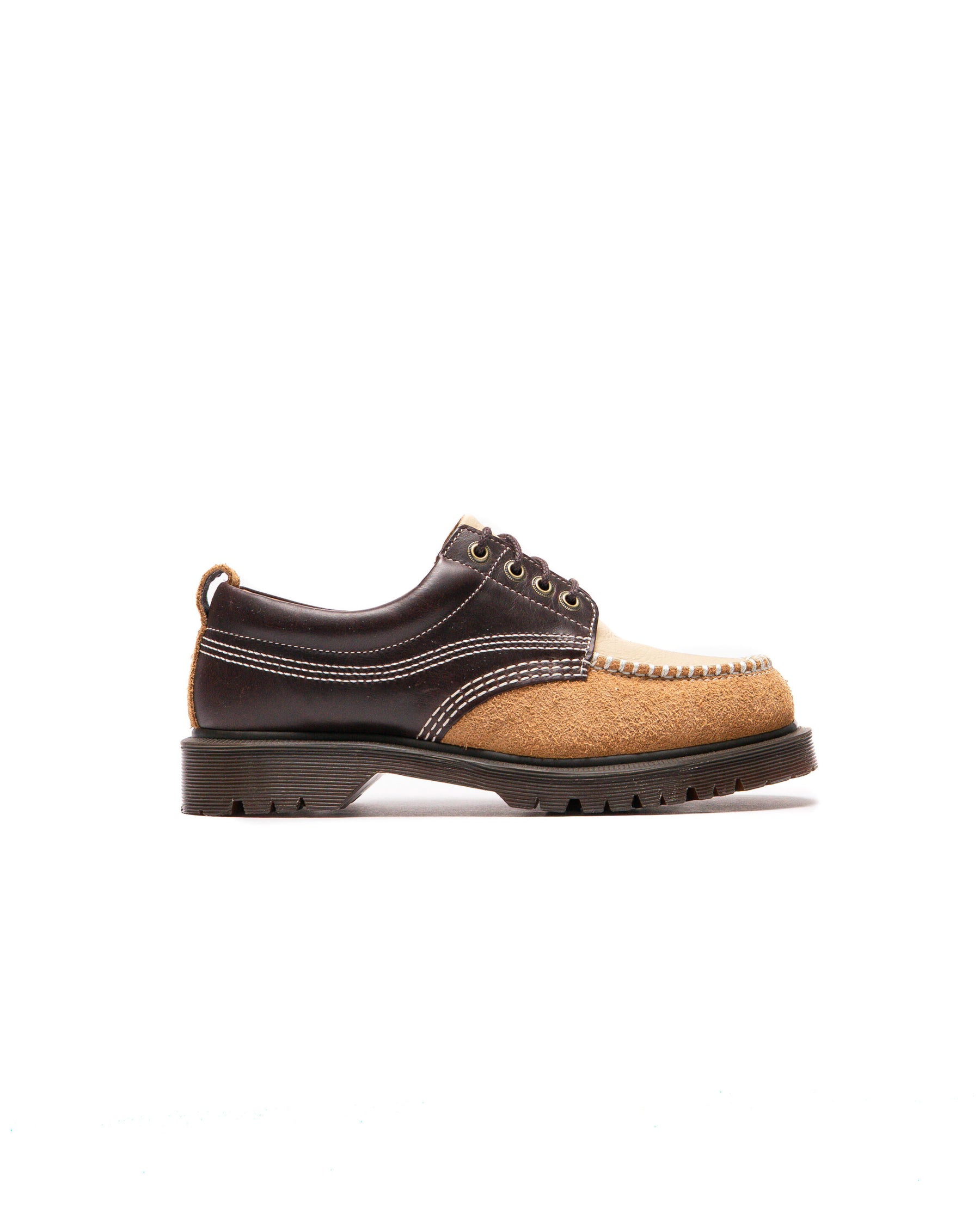Dr. Martens
On a stylistic level, Dr. Martens’ simple silhouettes allows their wearers to adopt the boots and shoes as part of their own individual and very distinctive style. On a practical level, their famous durability and comfort make them ideal for the unforgiving world of gigs and street fashion. And then finally on an emotional level, they are a badge of attitude and...
shop now
However, it wasn’t always this way: Dr. Martens were originally a modest work-wear boot that was even sold as a gardening shoe at one stage. So, how did this utilitarian boot transform into one of the most culturally relevant brands of the modern era? The story is as distinctive and interesting as the shoe itself.
In 1945 Dr. Klaus Maertens, a 25-year-old soldier, recovered from a broken foot as he created a unique air-cushioned sole to aid his recovery. Then he showed it to an old university friend and mechanical engineer, Dr. Herbert Funk and together they began to produce their shoes by using disused military supplies. Within a decade they had a booming business, which shoes were mostly bought by older women. But in 1959, they decided it was time to advertise their revolutionary footwear invention in overseas magazines.
In England, family owned Griggs company's attention was caught by the German’s advert for their innovative air-cushioned sole. So an exclusive license was acquired and a few key changes made, including the heel, upper, a distinctive yellow frame stitch and a two tone grooved sole sole pattern. The boots were branded as ‘Airwair’ and came complete with a black and yellow heel loop featuring the brand name and the slogan “With Bouncing Soles”. Taking its name from date of its introduction, April 1st 1960, the eight-holed 1460 Dr. Martens boot was born.
Initially worn by Britain's working class, Dr. Martens’ first few years of existence was very much that of a selling solid quantities £2 work-wear. Then the boots were suddenly picked up by early multi-cultural skinheads as well as Pete Townshend of The Who. By doing so they were changing the functional work-wear boot into a subcultural essential and within a couple years Dr. Martens became a fierce symbol of self-expression and rebellious attitude.
Because of the many sales of small men’s size boots Dr. Martens discovered a street trend for girls buying and customising the simple 8-hole boot. Meanwhile, US Hardcore musicians touring the UK began to take pairs of DM’s back to the west coast, and therefore American subculture’s adoped the brand and it became synonymous with festival culture.
Shortly after the brand’s fortieth birthday, sales declined so dramatically that all but one of the UK factories had to be closed to prevent bankruptcy. Then in 2003 the revitalisation of the famous brand began with high fashion designers from around the globe re-interpreting and customising the classic 1460 boot.
In 2010 a revitalised Dr. Martens celebrated its fiftieth anniversary: five decades that have witnessed the brand’s adoption by a diverse range of tribes, celebrities, musicians and free-thinking individuals – each adapting and twisting the boots and shoes to their own personal needs, attitudes and identity. And today is your turn.























